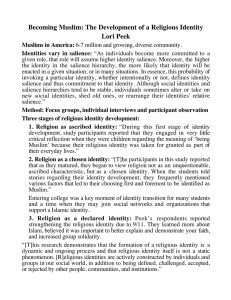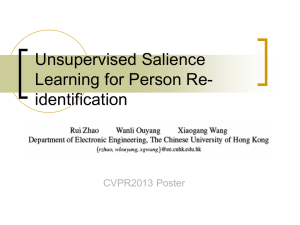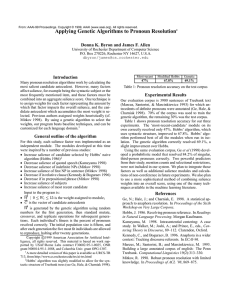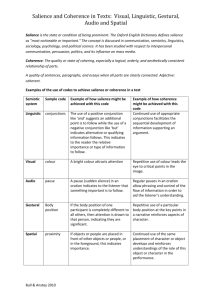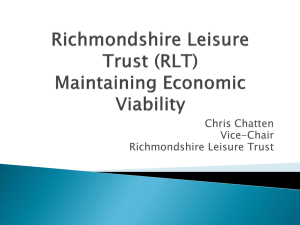Super`s Theory: Late Adolescence to Early Adulthood
advertisement
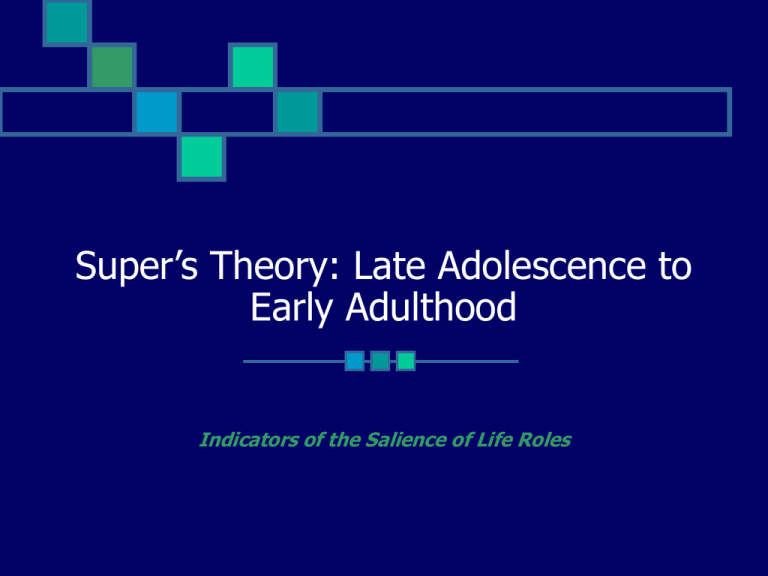
Super’s Theory: Late Adolescence to Early Adulthood Indicators of the Salience of Life Roles Indicators of the Salience of Life Roles Involvement is measured in terms of: · Participation - measures actual behavior of a person · Commitment - future plans, a desire to be active · Knowledge - information about a role from experiencing the role or by observing it Value Expectations -opportunity for various roles to meet a variety of needs; values measured by Value Expectation Scale of the Salience Inventory; includes 14 value expectations*: Value Expectations Ability utilization – using one’s skills and knowledge Achievement – feeling that one has produced good results Aesthetics – finding beauty in the role one chooses Altruism – helping others with problems Autonomy – independent and working on your own Creativity – discovering or designing new things Economic Rewards – to have a have a high standard of living and material things Lifestyle – plan one’s own activities and live the way you want to Physical activity – being physically active Prestige – opportunity for individuals to be acknowledged for what they accomplish Risk – dangerous or exciting challenges Social Interaction – being with other people and working in a group Variety – being able to change work activities Working Conditions Life Roles Studying--Includes a number of activities: during school years – courses, school, studying at library or home. Many people continue their education at some point in their life for pleasure or to enhance their job advancement or success Working-May start in childhood (e.g. babysitting, mowing lawn, etc.). Adolescents usually get part-time work. Adults work at one or more jobs at various times in their lives. At retirement, jobs for pay or profit may be for fewer hours than when individuals were younger Community Service Includes broad range of voluntary service groups (e.g. social, political, or religious) Home and Family Varies greatly depending on age of individual As adults enter later years, their responsibility for home and family may increase or decrease markedly Leisure Activities Nature and importance of leisure varies considerably throughout life Particularly important for children and adolescents Lifetime sports – sports that are less physically demanding and require fewer participants, so they are easier for adults to participate in at various times in their lives Citizen Child Parent ADULT LIFE STAGES Basic Stages of Career Development Exploration – 15 to 25 years old, the efforts that individuals make to get a better idea of occupational information, choose career alternatives, decide on occupations, and start to work. Crystallizing – clarify what they want to do, learn about entry- Specifying - college graduates, early 20’s, high school students Implementing - last phase prior to working, making plans to level jobs, typically high school students, narrow choices who go straight to work, must choose their first full-time job, specify their preferences so they may find an employer fulfill their career objectives, start to network, talking to university counselor ADULT LIFE STAGES Establishment - 25 to 45, getting established in one’s work by starting in a job that is likely to mean the start of working life, work in an occupation that will probably be steady for many years, for semi- and unskilled workers, it refers to the person who works for much of his or her lifetime. Stabilizing - settling down in a job and being able to meet those job requirements that will ensure that a person can stay in the field in which he started, apprehensive about whether he has the skills necessary to stay with the work Consolidating - starts to become more comfortable with work and wants to be a dependable producer, competent, and reliable Advancing - occurs any time in the establishing stage, moving ahead into a position of more responsibility with higher pay ADULT LIFE STAGES Maintenance - 45 to 65, not advancing, but maintaining their status in work. Find out how their work will change in the future Holding - some level of success has been attained, concerned with holding onto the position that they have Updating - updating workers on changes in their field, learning new things Innovating - making progress in one’s profession, develop new skills ADULT LIFE STAGES Disengagement - continue to use their mental capacities for growth and at the same time disengage from various activities (e.g. work) Deceleration - slowing down one’s work responsibility (i.e. finding easier ways to do work or spending less time at work) Retirement Planning - financial planning and planning activities to do when retired, individuals return to crystallization stage Retirement Living - late 60’s, leisure, home and family, and community service becomes more important than work Recycling Not everyone follows stages in a neat orderly outline, may reenter any stage at any time SUPER’S LIFE STAGES OF WOMEN 1. Stable homemaking career pattern - get married soon after school and do not work 2. Conventional career pattern - enter work after high school or college, but after marrying, they are full-time homemakers 3. Stable career working pattern - after school, work continuously 4. Double-track career pattern - combine work and homemaking 5. Interrupted career pattern - enter work, then marry and full-time homemaking, then go back to work after children are older 6. Unstable career pattern - drop out of workforce, return, drop out, return. 7. Multiple-trial career pattern - works, but never really establishes career, has a number of unrelated jobs in her career Bardwick described typical experiences of women at various points in their adult life 1. Many women between 30 to 40 who have been involved in a career are concerned with not wanting to delay having children any longer 2. Many women are concerned with balancing their professional role and their feminine role 3. Between 40 to 50, women start to develop more autonomy and to become more independent. Women got back to work after children have gotten older, not a time of maintenance, but of career accomplishments 4. Bardwick is contrasted with Super by her notion that marriage and family are important to women’s career decision making and planning 5. Ecological perspective focuses on relationship between women and their environment LIFE STAGES OF CULTURALLY DIVERSE ADULTS Minority Identity Development (Atkinson, et al.) 1. Conformity - prefer majority culture 2. Dissonance - through information and experience, encounter conflict and confusion between values of own culture and majority’s 3. Resistance and immersion - rejects dominant culture and embraces minority culture 4. Introspection - begins to question total acceptance of minority culture 5. Synergetic articulation and awareness incorporates cultural values of both the dominant group and other minorities

